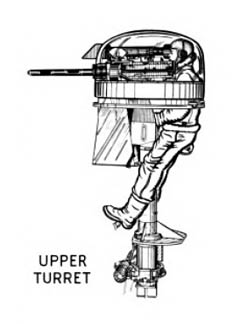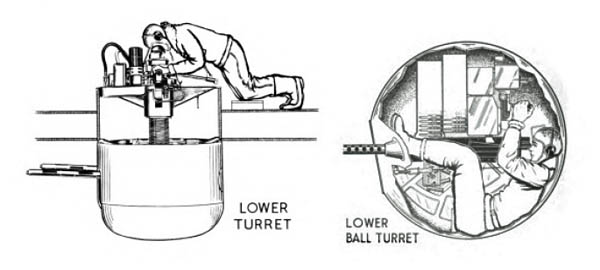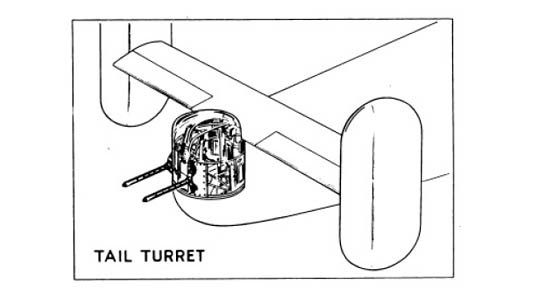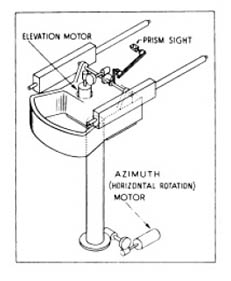Introduction to aircraft machine gun turrets from the WWII manual Index of Aeronautical Equipment with Navy and British Equivalents: Volume 5, Armament, March 1944.
MACHINE GUN TURRETS
(LOCAL CONTROL TYPES)The primary function of a machine gun turret is to provide an automatic means for a gunner to track a target and operate the guns. All turrets consist of an enclosure, a turret control system, and means of mounting, sighting, feeding, and firing the guns.
The locally-controlled turret is a rotatable structure in the form of a ball, dome, or rounded cylinder, in which one or more machine guns are mounted. The guns are sighted, controlled, and fired by a gunner within, above, or below the turret, depending upon its type and location in the airplane.
Turrets are designated according to their installation in the airplane, i.e.: upper turrets (on the upper deck), lower or belly turrets (under the fuselage), tail turrets, and nose turrets.
Upper turrets are non-retractable and have dome-like, transparent enclosures of plexiglas and metal under which the gunner sits or stands. The guns may be rotated through 360 degrees horizontally, through 90 degrees in elevation, or any simultaneous combination of the two movements.
Lower, or belly turrets can be either retractable or non-retractable. They may be spherical, with the gunner seated inside; or hemispherical, with the gunner kneeling inside the airplane above the turret. The enclosures are usually of metal and plexiglas. The guns may be rotated through 360 degrees horizontally, through 90 degrees in depression, or any simultaneous combination of the two movements.
Tail turrets are not retractable. The cylindrically-shaped enclosure includes steel armor plate protection, a cover of transparent plexiglas, and, in some installations, flat panes of bullet-proof glass. The gunner is seated completely inside the structure and controls the turret to move the guns through approximately 180 degrees horizontally, 90 degrees upward, and 90 degrees downward.
Nose turrets are not retractable; two models have exactly the same design as tail turrets, and a third model resembles the dome-type lower turret. This turret consists of a metal enclosure and is located below the fuselage nose. The gunner, seated above the turret and inside the plexiglas nose of the airplane, can control the guns through 360 degrees horizontally and 90 degrees downward.
Control of turrets may be either electric or hydraulic. Electrical installations operate on either a 12 or 24 volt system. Hydraulically-controlled turrets are operated by hydraulic motors.
Electrically-operated turrets are rotated horizontally by means of a reversible electric motor and a system of gears. The guns are elevated or depressed by a second reversible electric motor and gear system which move a gun carriage attached to the turret. Both of these actions may take place at the same time. The gun sight moves with the gun. Hand grips control the electric motors and regulate the speed and direction of turret movement. These controls also have an electric button or trigger mechanism to fire the guns.
Hydraulically-operated turrets use a system of control valves or levers which may be opened, closed, or moved by handgrips. In some turrets, the flow of oil from an electrically-driven pump operates two hydraulic motors, each of which moves a gear train. One system of gears rotates the turret in a horizontal plane and the other elevates or depresses the guns, both actions taking place simultaneously.
Ammunition, in link belts, is stored in containers inside the turrets, and is automatically conveyed to the individual guns. After being fired, ejected cartridge cases and links fall to the floor or into a canvas bag attached to an ejector chute.
Automatic fire cut-off mechanisms, used with all turrets to prevent the gunner from shooting away part of his own airplane, interrupt the firing of the guns when they come in range of airplane parts such as tail surfaces, etc.













